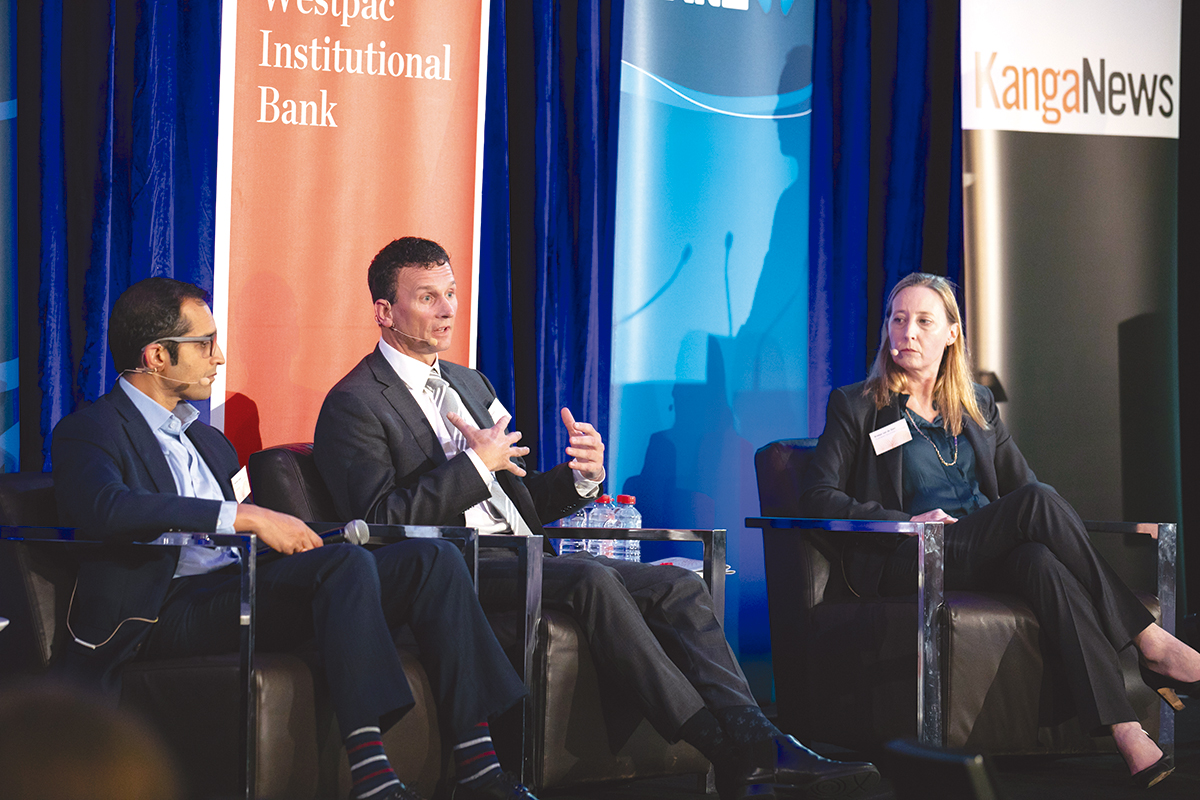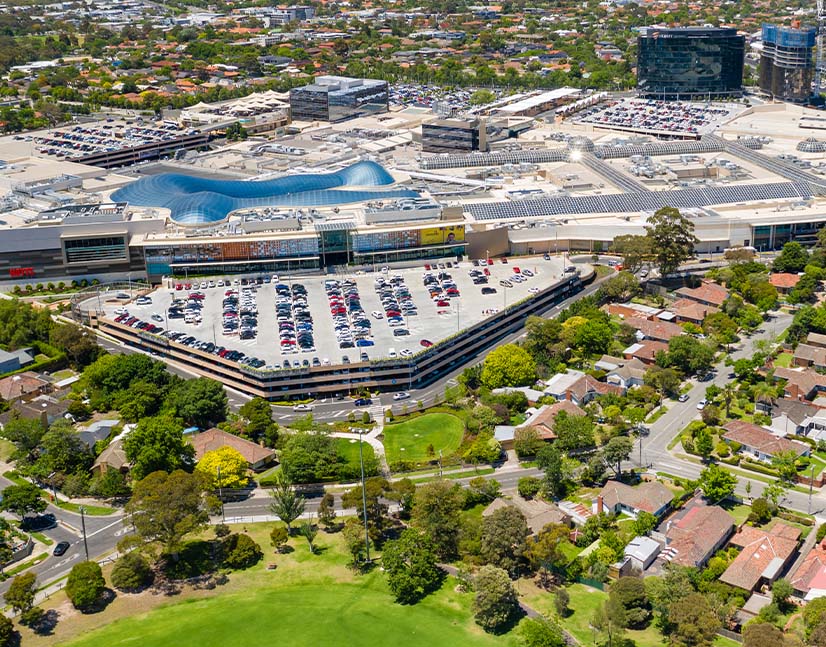
IBOR of the beholder
The future of interbank offered rates (IBORs) is under question globally. While Australia’s rate appears to stand a better chance of survival than many of its global peers, local market participants cannot afford to be complacent in a rapidly evolving environment. IBOR transition was explored in depth at the KangaNews Debt Capital Markets Summit 2019, including in a panel discussion featuring leading local and international experts.
Irving There has been a lot of talk about the status of Australia’s bank-bill swap rate (BBSW), especially around the viability of the one-month benchmark. What is the latest from the Australian Securities Exchange (ASX) on BBSW, including how it is refining the calculation methodology to deal with challenges?
Since we introduced the new methodology, on average we are seeing about three tenors per day formed using the volume weighted-average price (VWAP) approach and about A$1.8 billion (US$1.3 billion) per day of trading volume underpinning that calculation. That’s a long-term average over the period we have been live with VWAP.
Most of the transactions – about 88 per cent – that take place each day are happening within our rate-set window of 8.30-10am. So the majority of transactions are being used to calculate BBSW.
Earlier today, we heard Christopher Kent from the Reserve Bank of Australia (RBA) highlight the status of one-month BBSW, which I think is very helpful.
There is a lot more volatility in one-month BBSW pricing compared with the three- and six-month tenors, which is very much being driven by the type of transactions we see in the one-month rate. Three- and six-month transactions tend to be focused on the straight run date and to be very stable, whereas the one-month is less of a bank issuance market and more a buyback environment. This means more variability of dates in the maturity pool for one-month.
This extra volatility in the one-month rate was most marked on 15 January, when we saw a 9 basis point difference between the VWAP rate and the national best bid and offer or straight-run rate.
We are doing some work to improve the stability of the one-month rate. We are introducing what we are calling an “interim fix”, which narrows the maturity pool to three business days from five. The back analysis we have done on that change in the maturity pool shows this will vastly improve the stability of the rate.
On the other hand, what this also does is reduce the number of occasions on which we can form the one-month rate using the transaction-based methodology – so it is very much an interim solution to add stability to the rate.
We are now working with our advisory committee and with the market to further enhance the BBSW methodology, that is still transaction-based but applies more of a regression-style approach to calculation of the rate. This will improve stability and maximise the number of times we can form BBSW under a transaction layer for all tenors.
Irving The ASX is also involved in exploring alternative reference rates. What is the scope of its work in this area?
The new rate is a “realised AONIA” [Australian overnight indexed average] for 1-6 month tenors. This will be available to existing BBSW subscribers – they will receive it via email each day so they can start seeing how it behaves and considering how they can incorporate it into future transactions and their systems.
We are also in the very early stages of developing a secured funding rate. There is a lot for us to do here and we have formed a working group to assist in defining the methodology. The purpose here is to get more transparency into the repo market and also to develop a term structure for repo.
Irving South Australian Government Financing Authority (SAFA) has done a lot of work on AONIA including exploring the potential to do a bond transaction using it as the pricing benchmark. Andrew Kennedy, why do you see AONIA as an appropriate rate for SAFA to issue off, and what are your views on its relevance more generally?
Some time ago, we set about restructuring the way we work internally towards a point where we began servicing our own clients using the RBA cash rate as the base rate for lending. To be issuing from a credit benchmark but lending from a risk-free rate created risks within our business.
Our journey has been about appropriateness and risk management. Like all organisations, we are trying to manage our risk in the most appropriate fashion possible.
We investigated a range of options to achieve this and we reached the conclusion that the one stable, transparent, dependable rate available in the market was the RBA cash rate. This was prior to any serious work being undertaken – globally or locally – on developing a projected rate from cash rates.
The best methodology going forward – and this is what the UK has done with the sterling overnight indexed average (SONIA) – is to look at a backwards-referencing, daily-compounded rate.
Having got to where we did in our own processes, we have engaged as many market participants as possible in a conversation around what works best in their businesses and what’s most appropriate for them.
I want to be absolutely clear that our goal is not to replace BBSW. We just want to help develop a suite of products, of which AONIA is just one. For us, it is about finding the most appropriate option for SAFA. But we hope some investors and other issuers will also see it as the most appropriate risk-management tool and benchmark for their businesses.


BBSW is also responsive to changes in liquidity conditions. One of the challenges we have in Australia is that our cash rate functions differently from its international peers, specifically that it does not reflect changes in liquidity. This has implications for hedging – for instance, if we were buying SAFA notes and funding them on repo, our repo cost could increase without offsetting compensation from a higher coupon.
I note the RBA has stated that while BBSW remains robust and appropriate for funding transactions in Australia, we have to question whether this can continue to be the case as international markets are moving towards risk-free base rates.
I’d like to hear Greg Moore’s thoughts on the implications for the derivatives market in this context. Could we have, for instance, a cross-currency swap with the Australia cash rate on one end and something like the US secured overnight funding rate (SOFR) on the other? I’d like to understand how such product would manage the implied risk from changing liquidity conditions, where SOFR would move but our cash rate would remain static.
It would make the trading spread – the bills-LIBOR number – much more volatile, because it is introducing a new component. It’s not just Australian dollar supply versus US dollar supply, it’s also Australian dollar supply and credit versus US dollar risk-free supply. It would be a more complex instrument to trade and therefore would inevitably have a more volatile spread.
If there needs to be an adjustment for market volatility it is possible to do this via the traded margin rather than via the index.

Irving Global markets are looking at both secured and unsecured rates as alternative risk-free benchmarks. Do you think we could end up with a situation in which the two exist in parallel?
In fact, Fed funds would in many ways have been a lot easier as an alternative reference rate than SOFR. For one thing, it’s been around for a really long time. The reason the market has gone for SOFR is simply volume – there is thousands of times as much activity in SOFR as there is in Fed funds. We need rates to be underpinned by as much transaction activity as possible to ensure they are free from manipulation and reflective of where cash and repo are really trading.
Irving How is the data for SOFR calculation sourced and are there any restrictions on where it comes from?
As I said, we are in the very early stages of developing a secured funding rate and we are looking at bringing in buy-side activity as well as bank-to-bank transactions.
IBOR transition: global progress report
Greg Moore is managing director and head of US fixed income, commodities and currencies at TD Securities – and also sits on the New York Federal Reserve’s Alternative Reference Rates Committee. He shared insights from the heart of the interbank offered rate (IBOR) transition process at the KangaNews Debt Capital Markets Summit 2019.
Many global IBORs may not be available after the start of 2022 – the point at which regulators will no longer compel banks to submit short-term lending rates. While rates based on underlying money-market transactions – including Australia’s bank-bill swap rate (BBSW) – may survive, it is widely assumed that the days of many of the world’s most used benchmarks are numbered.
Global markets have developed over many years based on an assumption that the base rates underlying multifarious contracts are immutable. This is proving not to be a reliable truth in the medium-to-long term. How transition is managed will determine the extent to which the demise of IBORs introduces new risks to markets.
Irving There are plenty of market participants who don’t want to see BBSW disappear. But if it did, and the market moved towards a risk-free benchmark, what would market participants need to look out for and what could they learn from transitions like the UK’s move to SONIA from LIBOR?
We are seeing the market adapting well in general. We have been pleasantly surprised by the amount of issuance that has already happened based on alternative rates – it is not incredibly large volume, but several successful transactions have adopted risk-free rates in a relatively straightforward manner.
One major risk the International Capital Market Association is focused on is around the transition to new rates and fallbacks in the bond market. I have seen estimates of US$850 billion in notional value of LIBOR-linked bonds on issue. Some of this is of course going to mature before 2021, so will be fine. Another component of this total already has some form of fallback in place that takes into account the potential demise of LIBOR.
But there is still a large volume of outstanding bonds that were issued before we knew LIBOR was going to – or at least is likely to – disappear and will mature after it does. We are trying to raise awareness of the complexity of the operational challenge. This includes different laws governing bonds, lack of industry protocols, the range of asset classes – securitisation, for instance – and varying levels of issuer sophistication.
The situation is more complex because of different products like vanilla bonds and structured notes, and the different participants involved. It is quite hard to map out, even for us as an industry association.
The other obvious question is the ‘what’ – what is the fallback we will end up using?
However, the thing we spend most time discussing is the mechanism or legal means by which we go about amending outstanding trades. The cash market is particularly problematic here.
UK law has a mechanism by which cash products can obtain quorum, so you don’t need everybody to agree to a transition. Under US law – specifically New York law – you need unanimous consent to make this sort of change to an outstanding cash product. Practically speaking, unanimous consent is impossible – there will always be a holdout. That might be opportunism or just lack of sophistication, for instance a retail investor that just doesn’t care.
This demands a different approach, for instance tenders or buybacks, and also the recognition that you will never get 100 per cent participation. Some element of LIBOR risk is likely to be impossible to eradicate, so the goal needs to be defining how big that risk is and what alternative steps can be taken to address it.
Currently, ADB has no bond issues linked to IBOR with maturity beyond 2021 and we have refrained from issuing IBOR-linked bonds with reset dates past December 2021 because there is not yet a clear linkage and match between the cash product and swap fallback.
In 2018, ADB started actively to explore new floating-rate note (FRN) products and finalised its system preparation to support issuance using alternative indices such as SOFR- and SONIA-linked liabilities and associated swaps.
So far, we have issued £2 billion (US$2.6 billion) of SONIA-based FRNs across three maturities, and the scale and depth of demand has been a very pleasant surprise. Sterling benchmark size is usually £250 million, but the smallest volume we have achieved for a SONIA FRN so far has been £500 million. Our inaugural trade in this format was for £600 million, which was our record sterling outing until we exceeded it again with a £700 million, five-year SONIA deal a few weeks ago. ADB is also the first issuer to do a SONIA tap.
On the other hand, while we have set up documentation for SOFR FRNs we haven’t yet issued in this format. Depth of demand and pricing have a lot to do with this. While the SONIA market is available from one to seven years, the majority of SOFR issuance is limited to the front end of the curve, from six-month to two-year tenor, with money-market funds being the primary buyers.
There is also a price differential. Pricing for SONIA FRNs is in line with or sometimes even through comparable fixed-rate bonds, while there are some pricing differences – specifically, paying a new-product premium – between SOFR issues and comparable fixed-rate US dollar benchmark issues.
The age of the index matters in this context. SONIA has been in the market for about 20 years and SONIA swaps to fixed-rate or to sterling LIBOR have been actively traded for a number of years, too.
SOFR is really new, and while it has been developing fast it has only been published since last April. The derivatives market is still in its infancy and my understanding is the liquidity for SOFR-linked bonds and swaps is quite thin – in particular, it dries up after two- or three-year duration.
Finally, the features of a SONIA FRN structure closely match those currently used in the derivatives market. For example, the SONIA FRN coupon is compounded and paid quarterly. This makes it relatively straightforward for investors to set up their systems and infrastructure. With SOFR, some transactions are using compounded while others are based on a simple average.
Audience question What are the key weaknesses of SOFR and how can the market mitigate them?
I don’t know that there is a whole lot that can be done about this. It is just the new normal with risk-free rates – and not just in the US.
I do think there is a valid question about the value of the credit premium option, including issuers not having to pay it anymore. Many of our corporate clients, for example, like the idea of not having their borrowing cost linked to bank credit even if they are not yet operationally ready to take advantage of it.
Audience question What are the key considerations for issuers and investors when it comes to transitioning legacy trades to new benchmarks?
This would suggest that we should simply move everything to the new ISDA basis. But there is also a reputational risk that would come into play if we took this approach and then found, for instance, that investors prefer the new Intercontinental Exchange benchmark or that it is more appropriate for the product that we originally sold. If we had swaps that had moved to a SOFR-plus-margin basis we would be left with basis risk.
ADB’s loan products, similar to other multilateral development banks (MDBs), are based on LIBOR. A proper fallback of LIBOR is a must. There are, therefore, working-group discussions among MDBs especially on the legal side to discuss this issue and to ensure a consistent and aligned approach in this type of transition. As you can appreciate, such an approach is important as we share common borrowers and shareholders.

RBA staying on the IBOR case despite BBSW confidence
Speaking at the KangaNews Debt Capital Markets Summit 2019, the Reserve Bank of Australia (RBA)’s assistant governor, financial markets, Christopher Kent, made clear the central bank’s advice that Australian market participants need to make themselves ready for benchmark transition.
This is despite the RBA’s ongoing confidence in the overall robustness of Australia’s bank-bill swap rate (BBSW). The exception is a lingering question mark over the suitability of one-month BBSW as a market benchmark.
Australian market participants that have any engagement with international interbank offered rates (IBORs) need to prepare for coming change, Kent advised – in particular by being aware of new provisions the International Swaps and Derivatives Association (ISDA) is expected to publish by the end of 2019.
Audience question Given the share of semi-government funding that comes from bank balance sheets, is AONIA-based issuance more like risk transfer than risk management?
Further to this, it is actually the one-month rate that is most used in the market. This is the basis for the rate on people’s credit cards, mortgages and short-term loans. Moving to a cash-rate-based benchmark should be viewed as a risk-mitigation tool rather than something that is going to cause aggregation on their balance sheets.
Audience question If mortgage rates are based on LIBOR, what reference rate will be adopted for home-loan borrowers?
This process has uncovered an interesting dilemma. Creating a new rate requires some underlying transactions, and a number of banks in the ARRC have very publicly stated that if three-month SOFR swaps are going to be used to determine this new benchmark – off which mortgages are going to be fixed – they don’t want to be trading the underlying swaps at all. This is given the scrutiny, fines and jail terms that have been associated with LIBOR.
The Fed may have to resolve this dilemma. But as things stand the plan is still to develop a term SOFR rate implied off either swaps or futures. The ARRC is maintaining its recommendation that some products – including mortgages – need a rate of this type.
Audience question Australian regulators say they are confident in the robustness of BBSW but also that market participants need to be prepared for LIBOR transition. What should borrowers and lenders be most cognisant of if they are planning to enter long-duration exposures right now?

HIGH-GRADE ISSUERS YEARBOOK 2023
The ultimate guide to Australian and New Zealand government-sector borrowers.

WOMEN IN CAPITAL MARKETS Yearbook 2023
KangaNews's annual yearbook amplifying female voices in the Australian capital market.

SSA Yearbook 2023
The annual guide to the world's most significant supranational, sovereign and agency sector issuers.













